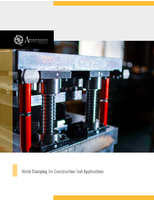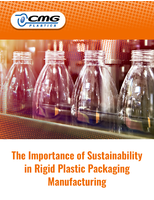ASTM works on standard for heavy metals analysis in glass.
Press Release Summary:
Under jurisdiction of Subcommittee F40.01 on Test Methods, proposed standard WK15289 addresses test methods for analysis of heavy metals in glass using x-ray fluorescence. Standard will allow glass recyclers to sort incoming raw material stream to ensure that glass laden with lead, arsenic, or other heavy metals can be properly identified as hazardous. It will also ensure that products that could become hazardous to workers are not manufactured.
Original Press Release:
ASTM Declarable Substances Committee Begins Work on Proposed Standard for Heavy Metals Analysis in Glass
Changes in the composition of glass that recyclers receive has led to the need for a simple, quick and accurate method of sorting out incoming waste glass that contains arsenic, lead and other heavy metals. ASTM International Committee F40 on Declarable Substances in Materials is working on a proposed standard, WK15289, Test Methods for Analysis of Heavy Metals in Glass Using X-Ray Fluorescence (XRF), that will allow for an easier, more precise method of measuring heavy metals in recycled glass. WK15289 is under the jurisdiction of Subcommittee F40.01 on Test Methods.
"WK15289 will allow glass recyclers to sort their incoming raw material stream to ensure that glass laden with lead, arsenic or other heavy metals can be properly identified as hazardous," says Christopher Davies, technical service representative, Potters Industries. "It will ensure that products that could become hazardous to workers are not manufactured and it will also allow end users to write specifications that limit the total heavy metal content of glass products, to ensure their workers' safety." Davies also notes that currently accepted methods of measuring total heavy metal content in glass involve the use of HF acids in laboratory settings and are both expensive and time-consuming.
According to Davies, the issue of identifying the composition of glass to be recycled has taken on greater importance in recent years due to the increased use of leaded glass for cathode ray tubes that have entered the glass recycling stream. In addition, there has been an increased use worldwide of glass that is manufactured in countries that allow the use of lead and arsenic to clarify the glass.
Products that can be manufactured with recycled glass include pavement marking and metal finishing glass beads, fiberglass insulation and glass for plastic fillers.
Davies says that the subcommittee is seeking participation in the further development of WK15289, particularly from instrument manufacturers, laboratories that can help with precision and bias studies and glass manufacturers and recyclers.
For further technical information, contact Christopher Davies, Potters Industries, Conshohocken, Pa. (phone: 610/651-4660; chris.davies@pottersbeads.com). Committee F40 will meet Nov. 14-16 in Corning, N.Y. For membership or meeting information, contact Brynn Murphy, Technical Committee Operations, ASTM International (phone: 610/832-9740; bmurphy@astm.org).




